Animals
These quotes from John Norman's Nomads of Gor pertain to live animals, whether wild or domestic. For quotes regarding food preparation and consumption of any of the beasts or fowl listed below, please see "Tuchuk Eating Habits and Customs."
Wild Plains Animals
The Menagerie: As in many books in the series, John Norman saw fit to give us an extensive block of description in Nomads of Gor—in this case, of the animals found on the Plains of the Wagon Peoples. This is the only quote in which we see mention of the kailiauk or the black larl. Please note that all words written in bold were not highlighted in this manner in the original text.
“Even past me there thundered a lumbering herd of startled, short-trunked kailiauk, a stocky, awkward ruminant of the plains, tawny, wild, heavy, their haunches marked in red and brown bars, their wide heads bristling with a trident of horns; they had not stood and formed their circle, shes and young within the circle of tridents; they, too, had fled; farther to one side I saw a pair of prairie sleen, smaller than the forest sleen but quite as unpredictable and vicious, each about seven feet in length, furred, six-legged, mammalian, moving in their undulating gait with their viper’s head moving from side to side, continually testing the wind; beyond them I saw the tumits, a large, flightless bird whose hooked beak, as long as my forearm, attested only too clearly to its gustatory habits…beyond the birds, to my surprise, I saw even a black larl, a huge catlike predator found more commonly in the mountainous regions…” –Nomads, 2
Kite, Gorean: A kite is a form of hawk or eagle. If Gorean kites are anything like those of Earth, they are swift hunters of small animals and eaters of carrion, spending most of their time in flight.

“Overhead a wild Gorean kite, shrilling, beat its lonely way from this place, seemingly no different from a thousand others on these broad grasslands of the south.”—Nomads, 4
Prairie Urt:This plains urt is a smaller cousin of the horned rodent found in the cities, particularly port cities such as Kar and Lydius.
"Already the bosk were growing uneasy at the smell of death and already the grass about the camp was rustling with the movements of the tiny brown prairie urts, scavengers, come to feed.”—Nomads, 266
Rennels:These creatures may be thought of as somewhat similar to the scorpions of the Southern Plains. Though they are indeed poisonous, a few bites are not deadly, as we can see from the second quote below
as well as their immediate description.
“I was told by Kamchak that once an army of a thousand wagons turned aside because a swarm of rennels, poisonous, crablike desert insects, did not defend its broken nest, crushed by the wheel of the lead wagon.”—Nomads, 27
“..her calves were scratched and speckled with the red bites of rennels…” –Nomads, 135
Tumits: The tumit is reminiscent of certain flightless, carnivorous prehistoric birds of Earth.
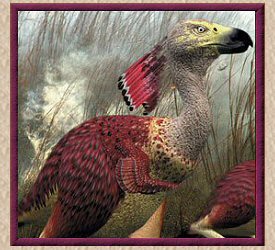
"…beyond them I saw the tumits, a large, flightless bird whose hooked beak, as long as my forearm, attested only too clearly to its gustatory habits…”—Nomads, 2
“Slowly, singing a guttural chant, a Tuchuk warrior song, he began to swing the bola…It was probably developed for hunting the tumit, a huge, flightless, carnivorous bird of the plains, but the Wagon Peoples use it also, and well, as a weapon of war.”—Nomads, 24
“…and besides [late spring] is nearly the best time for hunting tumits with the bola.”—Nomads, 327
Vosk gulls:One may imagine these gulls as being quite similar to the migratory scavenging and fishing sea birds of Earth.
“We then waited about a minute, and I saw several birds—river gulls—flying north. “’Those are Vosk gulls,’ said Kamchak, ‘In the spring, when the ice breaks the Vosk, the fly north.’ “I fished some coins out of my pouch for Paga.”—Nomads, 137
Domesticated Plains Animals
Bosk: Given that the length of an adult bosk’s horns, from tip to tip, may surpass the length of two spears, and that the wagon box to which the yoke is attached stands six feet off the ground, these animals would be absolutely enormous. Easy as it is to think of the bosk as having the size and temperament of Earth cows, they are actually more like prehistoric bison. Butchering, milking, and herding are hardly light tasks among the wagons.
“The bosk, without which the Wagon Peoples could not live, is an oxlike creature. It is a huge, shambling animal, with a thick, humped neck and long, shaggy hair. It has a wide head and tiny red eyes, a temper to match that of a sleen, and two long, wicked horns that reach out from its head and suddenly curve forward to terminate in fearful points. Some of these horns, on the larger animals, measured from tip to tip, exceed the length of two spears.”—Nomads, 5
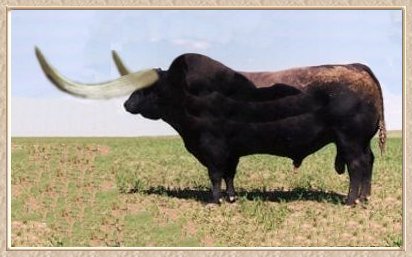
“The women of the Wagon Peoples, incidentally, keep a calendar based on the phases of Gor’s largest moon, but this is a calendar of fifteen moons, named for the fifteen varieties of bosk…for example, the Moon of the Brown Bosk…”---Nomads, 12
“These women were unscarred, but like the bosk themselves, each wore a nose ring. That of the animals is heavy and gold, that of the women also of gold but tiny and fine, not unlike the wedding rings of my old world.”—Nomads, 27

“The hundred, rather than eight, bosk that drew his wagon had been unyoked; they were huge, red bosk; their horns had been polished and their coats glistened from the comb and oils; their golden nose rings were set with jewels; necklaces of precious stones hung from the polished horns.”—Nomads, 41
Kaiila: Although many similarities exist between the horse of Earth and the kaiila of Gor, it must be remembered that these animals are larger, hardier, likely more swift, and above all, carnivorous. Not for nothing are these intelligent beasts tied with chain rather than rope. One would be well advised to make sure that a kailla has eaten its fill for the hand (Gorean week) before venturing into its pen. Further, hunters easily sense fear in potential prey. Any who tend the mounts of the Wagon Peoples, slaves especially, should carry themselves with confidence and authority. Note: Unlike the omnivorous kaiila of the Tahari and the herbivorous kaiila of the Barrens, Plains kaiila do not suckle their young and thus cannot be milked.
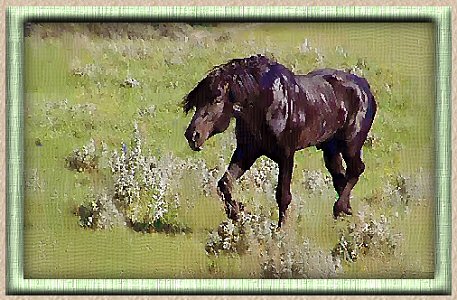
“The mount of the Wagon Peoples, unknown in the northern hemisphere of Gor, is the terrifying but beautiful kaiila. It is a silken, carnivorous, lofty creature, graceful, long-necked, smooth-gaited. It is viviparous and undoubtedly mammalian, though there is no suckling of the young. The young are born vicious and by instinct, as soon as they struggle to their feet, they hunt. It is an instinct of the mother, sensing the birth, to deliver the young animal in the vicinity of game. I supposed, with the domesticated kaiila, a bound verr or a prisoner might be cast to the newborn animal. The kaiila, once it eats its fill, does not touch food for several days.
“The kaiila is extremely agile, and can easily outmaneuver the slower, more ponderous high tharlarion. It requires less food, of course, than the tarn. A kaiila, which normally stands about twenty to twenty-two hands at the shoulder, can cover as much as six hundred pasangs in a single day’s riding.
“The head of the kaiila bears two large eyes, one on each side, but the eyes are triply lidded, probably an adaptation to the environment which occasionally is wracked by severe storms of wind and dust; the adaptation, actually a transparent third lid, permits the animal to move as it wishes under conditions that force other prairie animals back into the wind, or, like the sleen, to burrow into the ground. The kaiila is most dangerous under such conditions, and, as if it knew this, often uses such times for its hunt.”—Nomads, 13-14

“The third rider placed himself, reining in suddenly, pulling the mount to its hind legs, and it reared snarling against the bit, and then stood still, its neck straining toward me. I could see the long, triangular tongue in the animal’s head, behind the four rows of fangs.”—Nomads, 14
“The kaiila of these men were as tawny as the brown grass of the prairie, save for that of the man who faced me, whose mount was a silken, sable black, as black as the lacquer of the shield.”—Nomads, 14
“I saw the kaiila tense, almost like larls, their flanks quivering, their large eyes intent upon me. I saw one of the long, triangular tongues dart out and back. Their long ears were laid back against the fierce, silken heads.”—Nomads, 15
“…the enraged, thundering kaiila, hissing and squealing, at a touch of the control straps, arrested their fierce charge, stopping themselves, tearing at the deep turf with their suddenly emergent claws.”—Nomads, 17
“It seemed scarcely had he passed than the kaiila had wheeled and charged again, this time given free rein, that it might tear at me with its fangs.
I thrust with the spear, trying to force back the snapping jaws of the screaming animal. The kaiila struck, and then withdrew, and struck again. All the time the Tuchuk thrust at me with his lance. ..Then the animal seized my shield in its teeth and reared lifting it and myself, by the shield straps, from the ground.”—Nomads, 23
“I was later to learn that kaiila are trained to avoid the thrown spear. It is training which begins with blunt staves and progresses through headed weapons. Until the kaiila is suitably proficient in this art it is not allowed to breed. Those who cannot learn it die under the spear.”—Nomads, 24
“He did not buy the kaiila near the wagon of Yachi of the Leather Workers though apparently it was a splendid beast. At one point, he wrapped a heavy fur and a leather robe about his left arm and struck the beast suddenly on the snout with his right hand. It had not struck back at him swiftly enough to please him, and there were only four needlelike scratches in the arm guard before Kamchak had managed to leap back and the kaiila, lunging at its chain, was snapping at him. ‘Such a slow beast,’ remarked Kamchak, ‘might in battle cost a man his life.’ I supposed it was true. The kaiila and its master fight in battle as one unit, seemingly a single savage animal, armed with teeth and lance.”—Nomads, 170
Sleen:These fearsome, tireless hunters are not the cute and cuddly dog-like pets often portrayed in online Gor. Indeed, though a sleen may be unfailingly loyal to its owner, as was Hendow’s Borko in Dancer of Gor, it is uncontrollable if one does not know its unique command words. Domestic sleen are often trained using fleeing slaves as bait, so a slave should be especially careful around these dangerous beasts.
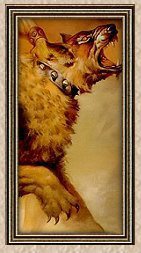
“…the domesticated, nocturnal herd sleen, used as shepherds and sentinels by the Wagon Peoples, released from their cages with the falling of darkness. “These animals, trained prairie sleen, move rapidly and silently, attacking upon no other provocation than trespass on what they have decided is their territory. They respond only to the voice of their master, and when he is killed or dies, his animals are slain and eaten.”—Nomads, 9
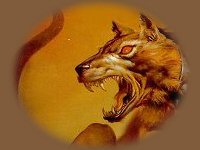
“As we passed among the wagons I leaped back as a tawny prairie sleen hurled itself against the bars of a sleen cage, reaching out at me with its six-clawed paw. There were four other prairie sleen in the cage, a small cage, and they were curling and moving about one another, restlessly, like angry snakes. They would be released with the fall of darkness to run the periphery of the herds, acting, as I have mentioned, as shepherds and sentinels. They are also used if a slave escapes, for the sleen is an efficient, tireless, savage, almost inescapable hunter, capable of pursuing a scent, days old, for hundreds of pasangs until, perhaps a month later, it finds its victim and tears it to pieces.”—Nomads, 28
Tarsk: One may think of these animals as more like the boars of Africa than the usual barnyard hogs. Unless their tusks are sheathed, these animals could be quite formidable.
“Among the animals I saw many verrs; some domestic tarsks, their tusks sheathed…”—Nomads, 171
Verrs and Vulo: These beasts are nothing more than the Gorean version of goats and pigeons. Even so, sharp horns and beaks can gouge a hand or a leg; there is no truly, completely tame animal in a wagon camp, from the largest bovine to the smallest bird.
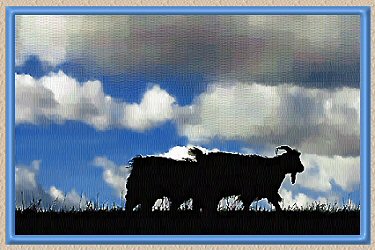
“I passed… the shattered, slatted coups for vulos, the broken walls of the keeps for the small, long-haired domestic verr, less belligerent and sizeable than the wild verr of the Voltai Ranges.”—Nomads, 10
“Among the animals I saw many verrs…cages of flapping vulos…” –Nomads, 171
"Kamchak and I dismounted and, from outside the circle, watched the four chief haruspexes of the Wagon Peoples approach the huge altar in the center of the field. Behind them another four haruspexes, one from each People, carried a large wooden cage, made of sticks lashed together, which contained perhaps a dozen white vulos, domesticated pigeons. This cage they placed on the altar. I then noticed that each of the four chief haruspexes carried, about his shoulder, a white linen sack, somewhat like a peasant's rep-cloth seed bag...
"Each of the four haruspexes then, after intoning an involved entreaty of some sort to the sky, which at the time was shining beneficently, suddenly cast a handful of something--doubtless grain--to the pigeons in the stick cage.
"Even from where I stood I could see the pigeons pecking the grain in reassuring feeding frenzy."--Nomads, 172
General Info
. .
Men. .
Men. .
Women
. .
Women
. .
Slaves. .
Slaves. .
Visitors .
Visitors
|